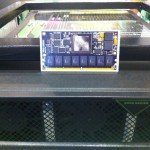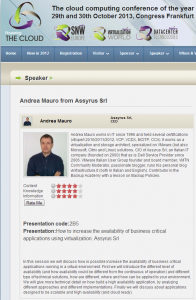 Reading Time: 3 minutes
Reading Time: 3 minutesMy briefing with Violin Memory, during the last Powering the cloud event, was with Garry Veale (Managing Director, EMEA).
The company was founded on 2005, but has started with first products released on 2009 (due to the long research and development and the high standard quality reached before goes to the market). The main focus is build Flash Memory Arrays for Enterprise Data Storage (note that the target is the Enterprise, and actually not the SMB). In the EMEA region they have offices in UK, France, Germany, Austria, Switzerland, Spain with more than 50 people.
In the company’s board there are people with a lot of previous experience:
- Donald Basile – Chief Executive Officer – Prior to his role at Violin, Don was Chairman and CEO of Fusion-IO and pioneered the use of PCIe flash cards for servers and workstations.
- Jon Bennett – Founder & CTO – Has a Bachelor of Computer Science degree (with Research Honors) from Carnegie Mellon and a Masters Degree from Harvard University.
They have a strong partnership with Toshiba for the required components of their storage.
Their products cover two different areas with two different approaches:
- Application acceleration -> reduce the storage latency (interesting for Business Critical Applications, and not that there are some employees focused on Oracle and SQL database to help in performance tuning)
- Virtualization -> 60% more dense (interesting for great consolidation projects)
The objective is reduce TCO, Capex, Opex in their solutions.
Products core is the Flash Memory Fabric, a resilient, highly available deep mesh of thousands of flash dies that work in concert to continuously optimize performance, latency, and longevity. Cache can work also on write to ensure maximum performance.
Contrary to SSD based systems that reuse legacy disk based architectures, the Flash Memory Fabric is the result of an all silicon system approach with patented flash optimization algorithms implemented in hardware, operating at line rate. All active components of the Flash Memory Fabric are hot-swappable for enterprise grade reliability and serviceability.
The arrays connect natively to existing 8Gb/s Fibre Channel, 10GE iSCSI, and 40Gb/s Infiniband network infrastructures. They are managed by the Violin Memory Operating System, providing a simple, easy GUI management interface for one or multiple enclosures.


In previous pictures you can notice a 6000 Series array that can reach 1 Million IOPS, latency in microseconds and up to 32 TB of RAW capacity in a 3U box.
Products are validated by several vendors, included VMware for the virtualization part (that include VAAI and a vCenter plugin), but also RHEL, SLES, Windows, Hyper-V, Citrix, AIX, Solaris SPARC, Solaris x86, HP-UX.
There are also interesting partnership with other vendor, especially with Fujitsu and Symantec:
See also: full report list of Powering The Cloud 2012 event.

















